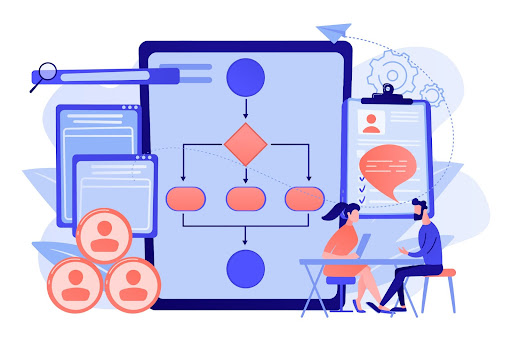
In today’s fast-paced business environment, time is of the essence. Proper management of time can significantly impact a company’s productivity, efficiency, and profitability. One effective solution that businesses are increasingly turning to is timesheet software. This article explores the ins and outs of timesheet software, its importance, features, types, considerations for choosing the right software, top solutions, implementation strategies, benefits, challenges, and future trends.
Introduction to Time Management Software
Timesheet software is a digital tool designed to track and manage the time employees spend on various tasks and projects. It provides businesses with a comprehensive overview of how time is utilized within the organization, facilitating better decision-making and resource allocation.
Importance of Timesheet Software
Tracking Employee Time
One of the primary functions of timesheet software is to accurately record the time spent by employees on different activities. This enables managers to monitor productivity levels, identify inefficiencies, and make informed decisions to improve workflow processes.
Project Management
Timesheet software plays a crucial role in project management by allowing project managers to track the time and resources allocated to each project. This ensures that projects stay on schedule and within budget, leading to improved project outcomes and client satisfaction.
Payroll Management
Timesheet software simplifies payroll management by automating the process of calculating employee hours and wages. This reduces the likelihood of errors and ensures that employees are accurately compensated for their work, thereby enhancing employee satisfaction and compliance with labor regulations.
Features of Effective Timesheet Software
Time Tracking
Effective timesheet software should offer robust time tracking capabilities, allowing employees to easily log their hours worked on various tasks and projects. It should also support different methods of time entry, such as manual entry, timers, and automatic tracking.
Project Tracking
The software should provide comprehensive project tracking features, including the ability to assign tasks, set deadlines, and monitor progress in real-time. This enables project managers to identify bottlenecks and allocate resources more efficiently to ensure timely project delivery.
Reporting and Analytics
Timesheet software should offer advanced reporting and analytics tools that allow businesses to generate customizable reports and derive actionable insights from time data. This enables managers to identify trends, track performance metrics, and make data-driven decisions to optimize productivity and profitability.
Integration Capabilities
Ideally, timesheet software should seamlessly integrate with other essential business tools such as payroll systems, project management software, and accounting software. This ensures smooth data flow between different systems, eliminates duplicate data entry, and enhances overall workflow efficiency.
Types of Timesheet Software
Web-Based Timesheet Software
Web-based timesheet software is hosted on cloud servers and accessible via a web browser. It offers the advantage of remote accessibility, allowing employees to log their time from anywhere with an internet connection. This makes it particularly suitable for distributed teams and remote work environments.
Mobile Timesheet Apps
Mobile timesheet apps are designed for smartphones and tablets, enabling employees to track their time on the go. They often come with additional features such as GPS tracking, offline mode, and push notifications, enhancing flexibility and convenience for mobile workers.
Desktop Timesheet Software
Desktop timesheet software is installed locally on a computer and accessed through a desktop application. While it may lack the mobility of web-based and mobile solutions, it offers greater customization options and can be more suitable for organizations with specific security or compliance requirements.
Factors to Consider When Choosing Timesheet Software
Pricing
When evaluating timesheet software options, businesses should consider factors such as upfront costs, subscription fees, and any additional charges for features or user licenses. It’s essential to choose a solution that offers a competitive pricing structure and aligns with the organization’s budgetary constraints.
User-Friendliness
The software should be intuitive and easy to use for both employees and administrators. A user-friendly interface reduces the learning curve and encourages widespread adoption across the organization, maximizing the software’s effectiveness and return on investment.
Integration Options
Businesses should select timesheet software that seamlessly integrates with existing systems and tools used within the organization. This ensures data consistency, eliminates silos between departments, and facilitates streamlined workflow processes.
Customization
The ability to customize the software to suit the unique needs and preferences of the organization is crucial. Businesses should look for solutions that offer flexible configuration options, customizable reporting templates, and the ability to tailor workflows to specific requirements.
How to Implement Timesheet Software Effectively
Employee Training
Proper training and onboarding are essential to ensure that employees understand how to use the timesheet software effectively. This may involve providing instructional materials, conducting training sessions, and offering ongoing support to address any questions or concerns.
Setting Up Processes
Businesses should establish clear processes and guidelines for using the timesheet software, including protocols for time entry, approval workflows, and reporting procedures. Consistent enforcement of these processes helps maintain data accuracy and integrity.
Regular Monitoring and Evaluation
Continuous monitoring and evaluation are critical to the successful implementation of timesheet software. Managers should regularly review time data, identify areas for improvement, and make necessary adjustments to optimize the software’s performance and alignment with business objectives.
Common Challenges and Solutions
Resistance to Change
Resistance to adopting new technology is a common challenge when implementing timesheet software. To address this, businesses should communicate the benefits of the software, provide adequate training and support, and solicit feedback from employees to address any concerns or objections.
Technical Issues
Technical issues such as system downtime or software bugs can disrupt the smooth operation of timesheet software. To mitigate this risk, businesses should choose a reputable vendor with a track record of reliability and responsiveness to technical issues.
Data Security Concerns
Protecting sensitive employee data is paramount when using timesheet software. Businesses should implement robust security measures such as encryption, access controls, and regular data backups to safeguard against unauthorized access or data breaches.
Benefits of Using Timesheet Software
Increased Efficiency
Timesheet software streamlines time tracking and reporting processes, saving time and effort for both employees and administrators. This allows employees to focus on their core tasks and responsibilities, leading to increased productivity and efficiency across the organization.
Accurate Billing
By accurately tracking billable hours and project expenses, timesheet software enables businesses to generate accurate invoices for clients. This improves cash flow, reduces disputes over billing discrepancies, and enhances the organization’s reputation for transparency and reliability.
Better Resource Allocation
Insights derived from timesheet data enable managers to identify underutilized resources, optimize staffing levels, and allocate resources more effectively to meet project deadlines and objectives. This ensures that the organization’s resources are utilized in the most cost-effective and efficient manner possible.
Future Trends in Timesheet Software
AI and Automation
Advancements in artificial intelligence and automation are shaping the future of timesheet software. Predictive analytics, machine learning algorithms, and natural language processing capabilities enable more accurate forecasting, proactive resource allocation, and automated time tracking.
Mobile Integration
Mobile integration is becoming increasingly important as more employees work remotely or on the go. Timesheet software will continue to evolve to support mobile devices, offering features such as geolocation tracking, voice commands, and biometric authentication for enhanced convenience and security.
Enhanced Analytics
The future of timesheet software lies in its ability to provide actionable insights and predictive analytics based on time data. Advanced reporting tools, customizable dashboards, and real-time analytics empower businesses to make informed decisions, identify trends, and anticipate future needs more effectively.
Conclusion
Timesheet software plays a vital role in helping businesses effectively manage their time, resources, and projects. By providing accurate time tracking, comprehensive reporting, and seamless integration with other systems, timesheet software enables businesses to streamline operations, improve productivity, and drive better business outcomes.
FAQs
-
What is timesheet software?
Timesheet software is a digital tool designed to track and manage the time employees spend on various tasks and projects within an organization. -
How does timesheet software benefit businesses?
Timesheet software helps businesses improve productivity, streamline project management, simplify payroll processing, and enhance resource allocation. -
Can timesheet software integrate with other business tools?
Yes, timesheet software can integrate with other essential business tools such as payroll systems, project management software, and accounting software to ensure smooth data flow and streamline workflow processes. -
How secure is timesheet software for sensitive data?
Timesheet software typically employs robust security measures such as encryption, access controls, and regular data backups to protect sensitive employee data from unauthorized access or data breaches.
Is there a free version of timesheet software available?
Yes, some timesheet software solutions offer free versions with limited features or user restrictions, while others may offer free trials or open-source options for businesses to explore before committing to a paid subscription.




